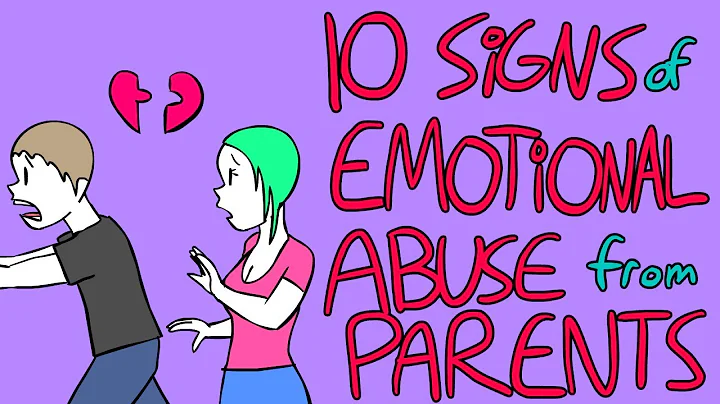Yesterday, several people invited Sister Sa to answer a question on Zhihu hot list. It turned out to be a mother in Zhoukou, Henan Province. After delivery, her baby was diagnosed with brachial plexus injury .

Ms. Guo went to the hospital after her amniotic fluid ruptured, and dystocia occurred during delivery. According to news reports, Ms. Guo said that the doctor did not recommend an anterotomy, did not communicate and sign, and did not conduct a guided lateral incision. She believed that the doctor had improperly performed the operation and forcibly pulled the fetus. The injury resulted in limited movement of the left upper limb and paralysis of the left hand.

Picture: Ms. Guo’s baby
At present, the child has undergone a series of treatments and surgeries, but recovery is still a long process. According to news reports, the hospital offered a one-time compensation of 300,000 yuan, but Ms. Guo refused.
Sister Sa is at least familiar with these things in the delivery room. Although we don’t understand the specific responsibility judgment, Sister Sa can still talk to you about this newborn’s brachial plexus injury, or newborn brachial plexus palsy.
Childbirth itself is a dynamic process, during which there may be many unexpected changes. During the delivery process, in case of adverse events , the newborn's body structure or functional damage caused by handling is called For birth injury .
Birth injuries may occur during labor, during delivery, or even after delivery, especially for newborns undergoing resuscitation in the delivery room. Brachial plexus injury is one of the most common neurological injuries related to birth trauma, with an incidence rate of approximately 0.04% to 0.2%.
The brachial plexus is a network of nerves that converge and branch, originating from the cervical and upper thoracic nerve roots and ending in named nerves that innervate the muscles and skin of the shoulder and arm. The earliest clinical reports of neonatal brachial plexus palsy (NBPP) were in the 1860s.

Possible mechanisms causing neonatal brachial plexus injury include: traction/traction, compression, infiltration and hypoxia, among which traction is considered to be the most common mechanism.
Traditionally, neonatal brachial plexus injury has been attributed to iatrogenic lateral traction on the fetal head, usually when shoulder dystocia impedes delivery.
Moreover, traction on the brachial plexus caused by lateral and downward traction will increase the traction on the brachial plexus compared with downward axial traction.
However, it should be noted that even if axial traction is properly performed during delivery, neonatal brachial plexus injury may occur;
In other words, brachial plexus injury after birth does not necessarily indicate nerve damage It must be the force or movement exerted by the doctor.

In some cases, uterine contractility and maternal breath-holding force alone may be sufficient to cause excessive stretching of the brachial plexus. In addition, prenatal factors may also contribute to the development of brachial plexus injury, including uterine abnormalities that can lead to abnormal fetal position and fetal compression, such as Mullerian duct dysplasia and uterine fibroids . Neonatal brachial plexus injury after cesarean section has also been reported.
In 2014, a systematic review from the American College of Obstetrics and Gynecology (ACOG) made the following observations:
- In deliveries complicated by shoulder dystocia, the incidence of transient NBPP is 1%-17%, and persistent NBPP occurs ≥1 year after birth. The incidence of sexual NBPP is 0.5%-1.6%.
- The incidence of NBPP in deliveries without proven shoulder dystocia is approximately 0.9%.
- Among infants born by cesarean section, the incidence of NBPP is 0.03%-0.15%. What are the risk factors for
?
Currently, the only identified risk factor for neonatal brachial plexus injury is shoulder dystocia.

Other possible risk factors include: significant maternal weight gain, maternal diabetes , multiparous women, macrosomia /high birth weight infants, abnormal fetal position, induction of labor , abnormal labor, assisted vaginal delivery, previous pregnancy complicated by shoulder dystocia or neonatal brachial plexus injury.
Having said this, I remembered that in the following answers to this question on Zhihu, I saw several respondents who thought that the hospital was passing the blame by linking neonatal brachial plexus injury to maternal diet and living habits. In fact, I think, The hospital's intention should be to express the risk factors of "excessive maternal weight gain and macrosomia", but the expression is really inaccurate.
However, having said that, none of these risk factors has been proven to have consistent and statistically significant predictive value for the occurrence of neonatal brachial plexus injury. Can
be prevented?
Unfortunately, there are currently no proven measures to predict or prevent NBPP. After all, we cannot accurately predict whether shoulder dystocia will occur during childbirth based on prenatal risk factors or abnormal labor.
Therefore, for doctors, whether they are obstetricians or midwives, they must focus on learning how to deal with shoulder dystocia before taking up their posts. For all women giving birth vaginally, doctors and midwives should be prepared for the possibility of shoulder dystocia and be aware of the various procedures that have been shown to be effective in delivering an impacted shoulder.

The American College of Obstetrics and Gynecology ACOG has recommended that in the face of these clinical situations, it is recommended that doctors consider changing routine obstetric management:
: Shoulder dystocia has been found in the past, especially shoulder dystocia with severe neonatal injury
: Mid-pelvic plane vaginal delivery with fetal birth weight >4000g
Because after all, the content obtained from the news Limited, it just said "dystocia occurred" and it is not known whether Ms. Guo had shoulder dystocia.
For newborns with shoulder dystocia, brachial plexus injury is indeed a common complication. In case of shoulder dystocia, in order to save the life of the newborn, the doctor may be in a hurry to end the delivery as soon as possible. hurt.

However, we still have to consider that it is inevitable, which does not mean that there is no need to take responsibility at all. After all, during this process, did the hospital and the doctor on duty at the time really take appropriate and reasonable measures? (For example, is there really no side incision, and no emergency cesarean section is recommended).
There is a division of responsibilities for traffic accidents. If the driving style is really bad and the driving skills are not up to standard, even if it is an unavoidable scratch on a crowded road, you must still take responsibility.
In any case, since the mother is dissatisfied with the hospital’s compensation plan, it would be more appropriate to insist on taking legal channels. The liability should be determined and then reasonable and legal penalties and compensation should be carried out.
No matter what, what I hope most is that the baby can recover as soon as possible without leaving any sequelae.
For expectant mothers, I hope everyone can remember that what is needed during pregnancy is reasonable nutrition, regular prenatal check-ups , we cannot predict unknown risks, maybe what we can do is to try our best to do what we can.
References:
[1]McGillicuddy JE. Neonatal brachial plexus palsy - historical perspective. J Pediatr Rehabil Med 2011; 4:99.
[2]Alfonso DT. Causes of neonatal brachial plexus palsy. Bull NYU Hosp Jt Dis 2011; 69:11.
[3]The American College of Obstetricians and Gynecologists Task Force on Neonatal Brachial Plexus Palsy. Incidence of neonatal brachial plexus palsy. In: Neonatal Brachial Plexus Palsy, Washington, D.C. 2014. p.1.
[4] The American College of Obstetricians and Gynecologists Task Force on Neonatal Brachial Plexus Palsy. Neonatal brachial plexus palsy and shoulder dystocia. In: Neonatal Brachial Plexus Palsy, Washington, D.C. 2014. p.41.





![[ENG SUB] 100 Chinese Questions to Know More About Someone 一百个中文问题 (free PDF) - DayDayNews](https://i.ytimg.com/vi/JjsAG8FxhyA/hq720.jpg?sqp=-oaymwEcCNAFEJQDSFXyq4qpAw4IARUAAIhCGAFwAcABBg==&rs=AOn4CLDdJuXOptdT6_W7GwSHzGQP9kEKTg)















